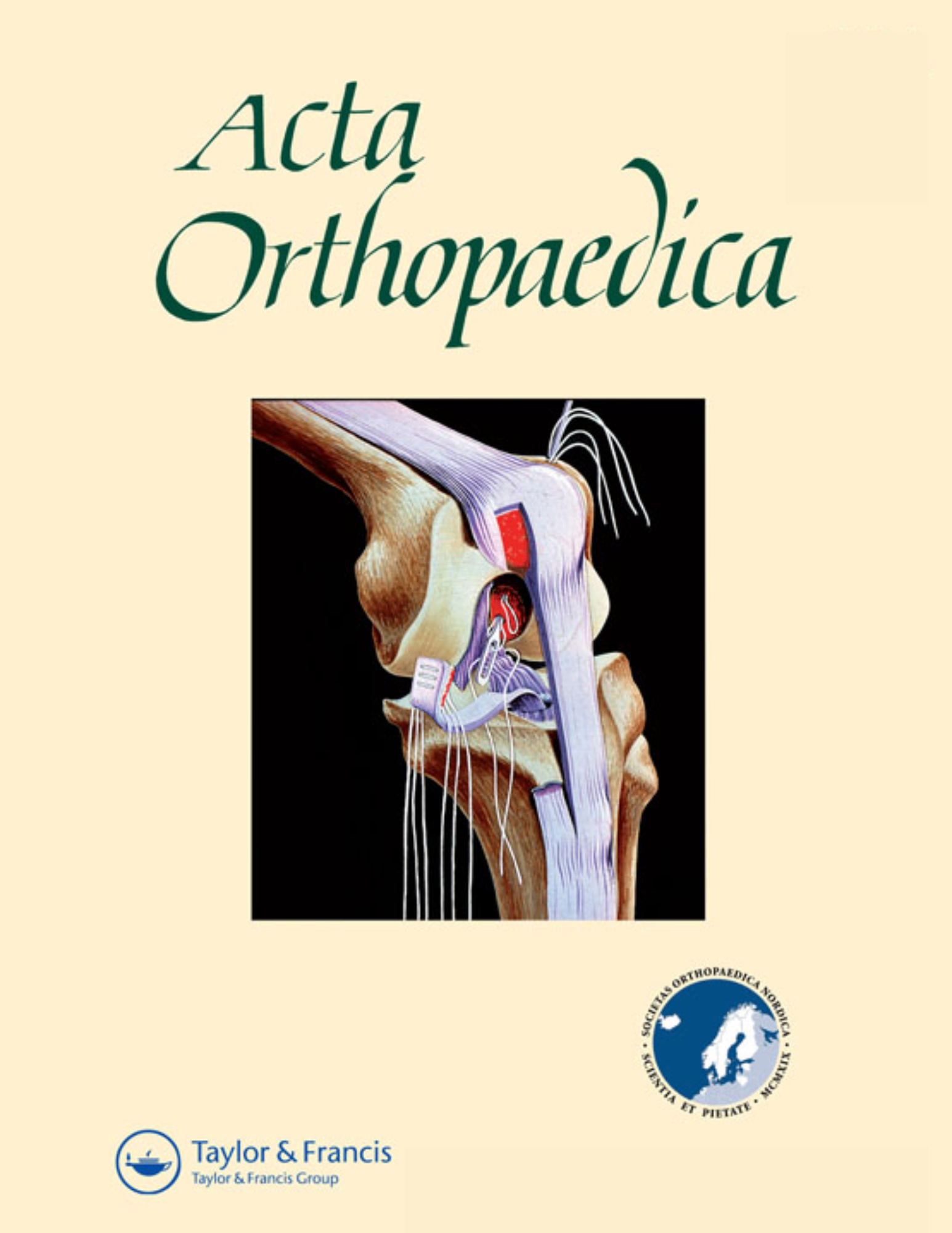
THA: No difference between low-profile cup and Standard cup in terms of migration and wear

THA: No difference between low-profile cup and Standard cup in terms of migration and wear
No difference in migration or wear between cemented low-profile cups and standard cups : A randomized radiostereographic study of 53 patients over 3 years
Acta Orthop. 2007 Aug;78(4):479-84Did you know you're eligible to earn 0.5 CME credits for reading this report? Click Here
Synopsis
60 patients with primary osteoarthritis awaiting total hip replacement, from ages 60-80 years, were randomized to either receive THR using a low-profile Lubinus Flanged Anti-Luxation Cup (FAL) or the Lubinus Standard Eccentric cup. The results at 3 years indicated that there no difference between the Lubinus FAL cup and the Lubinus Standard cup with respect to migration and wear.
Was the allocation sequence adequately generated?
Was allocation adequately concealed?
Blinding Treatment Providers: Was knowledge of the allocated interventions adequately prevented?
Blinding Outcome Assessors: Was knowledge of the allocated interventions adequately prevented?
Blinding Patients: Was knowledge of the allocated interventions adequately prevented?
Was loss to follow-up (missing outcome data) infrequent?
Are reports of the study free of suggestion of selective outcome reporting?
Were outcomes objective, patient-important and assessed in a manner to limit bias (ie. duplicate assessors, Independent assessors)?
Was the sample size sufficiently large to assure a balance of prognosis and sufficiently large number of outcome events?
Was investigator expertise/experience with both treatment and control techniques likely the same (ie.were criteria for surgeon participation/expertise provided)?
Yes = 1
Uncertain = 0.5
Not Relevant = 0
No = 0
The Reporting Criteria Assessment evaluates the transparency with which authors report the methodological and trial characteristics of the trial within the publication. The assessment is divided into five categories which are presented below.
3/4
Randomization
2/4
Outcome Measurements
4/4
Inclusion / Exclusion
4/4
Therapy Description
3/4
Statistics
Detsky AS, Naylor CD, O'Rourke K, McGeer AJ, L'Abbé KA. J Clin Epidemiol. 1992;45:255-65
The Fragility Index is a tool that aids in the interpretation of significant findings, providing a measure of strength for a result. The Fragility Index represents the number of consecutive events that need to be added to a dichotomous outcome to make the finding no longer significant. A small number represents a weaker finding and a large number represents a stronger finding.
Why was this study needed now?
In total hip replacement procedures, a higher degree of containment within the bony acetabulum is achieved with low-profile acetabular components. Incidence of radioluency and wear may be reduced with the complete bony containment of cups. The low-profile design allows for greater range of free motion before femoral neck and cup impingement occurs. However, in contrast, the low-profile cups result in decreased containment of the prosthetic head within the cup therefore increasing the risk of instability or dislocation. It was reported that use of the SHP (low-profile) cup resulted in increased migration and wear, at the same time as the Lubinus Flanged Anti-Luxation Cup (FAL) was being introduced. This resulted in the need to compare this FAL low-profile cup to Standard cups, in order to examine the safety of the FAL cup and it's effects of migration and wear.
What was the principal research question?
How does the low-profile Lubinus Flanged Anti-Luxation Cup (FAL) compare to the Lubinous Standard Eccentric cup, in terms of the effects on migration and wear, in patients with primary osetoarthritis undergoing total hip replacement, measured at a 3 year follow up period?
What were the important findings?
- There was no difference in cup migration (MTPM values) between the two groups (p=0.7 at 1 year, p=0.8 at 3 years).
- There was no difference between groups in terms of wear (p=0.9 at 1 year, p=0.7 at 3 years).
- The clinical results (WOMAC, VAS rest, VAS activity) were excellent, with no significant differences between both groups (all p>0.05).
- 3 cups (2 FAL, 1 Standard) reported increased proximal migration that indicated an increased risk of early loosening.
- No correlation was observed between migration and wear.
What should I remember most?
There was no significant difference between The Lubinus FAL cup and the Lubinus Standard cup, in terms of migration and wear, measured at 1 and 3 years following surgery. Clinical outcomes were equally favorable in both groups.
How will this affect the care of my patients?
In patients where a low-profile cup is acceptable and suitable, this study indicates that the FAL cup is safe and effective for patients undergoing total hip replacement. Further high-quality evidence with larger sample sizes is needed to evaluate the safety and efficacy of this novel implant.
Learn about our AI Driven
High Impact Search Feature
Our AI driven High Impact metric calculates the impact an article will have by considering both the publishing journal and the content of the article itself. Built using the latest advances in natural language processing, OE High Impact predicts an article’s future number of citations better than impact factor alone.
Continue



 LOGIN
LOGIN

Join the Conversation
Please Login or Join to leave comments.